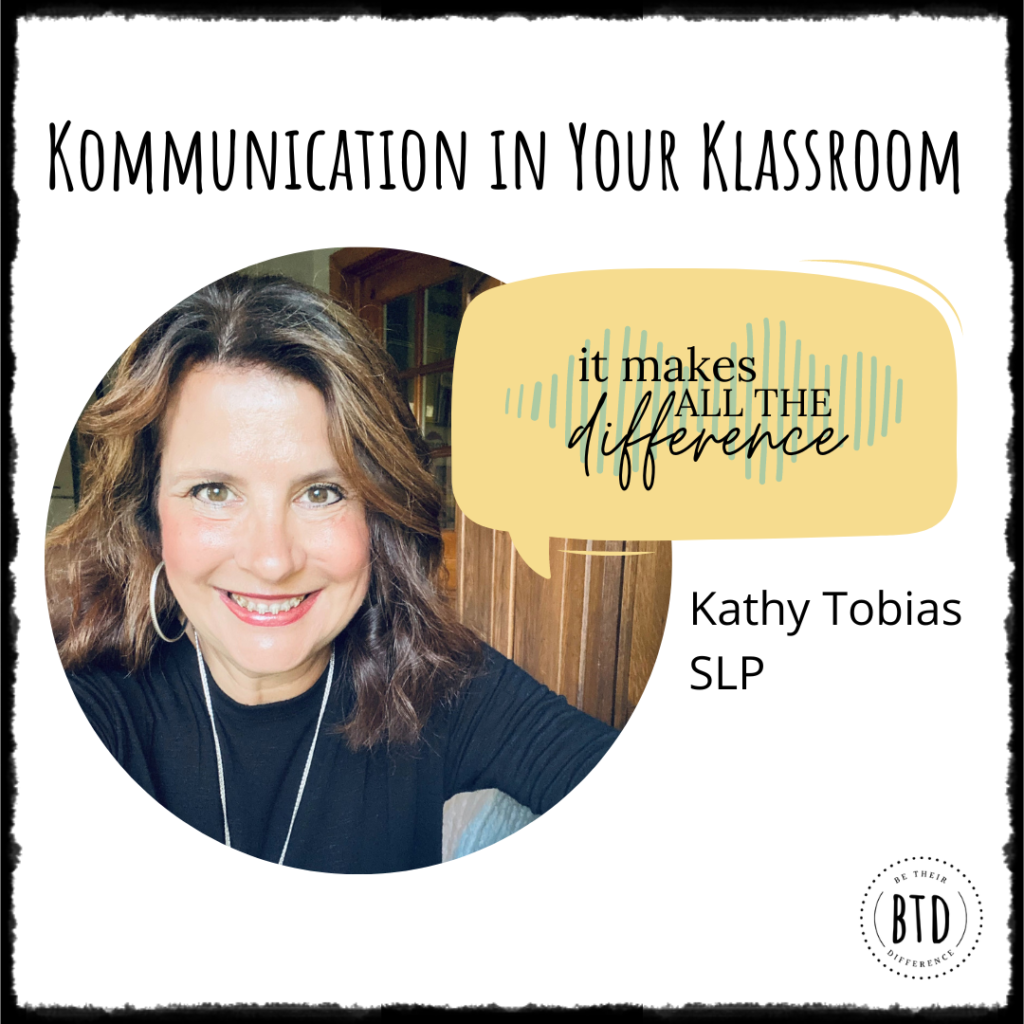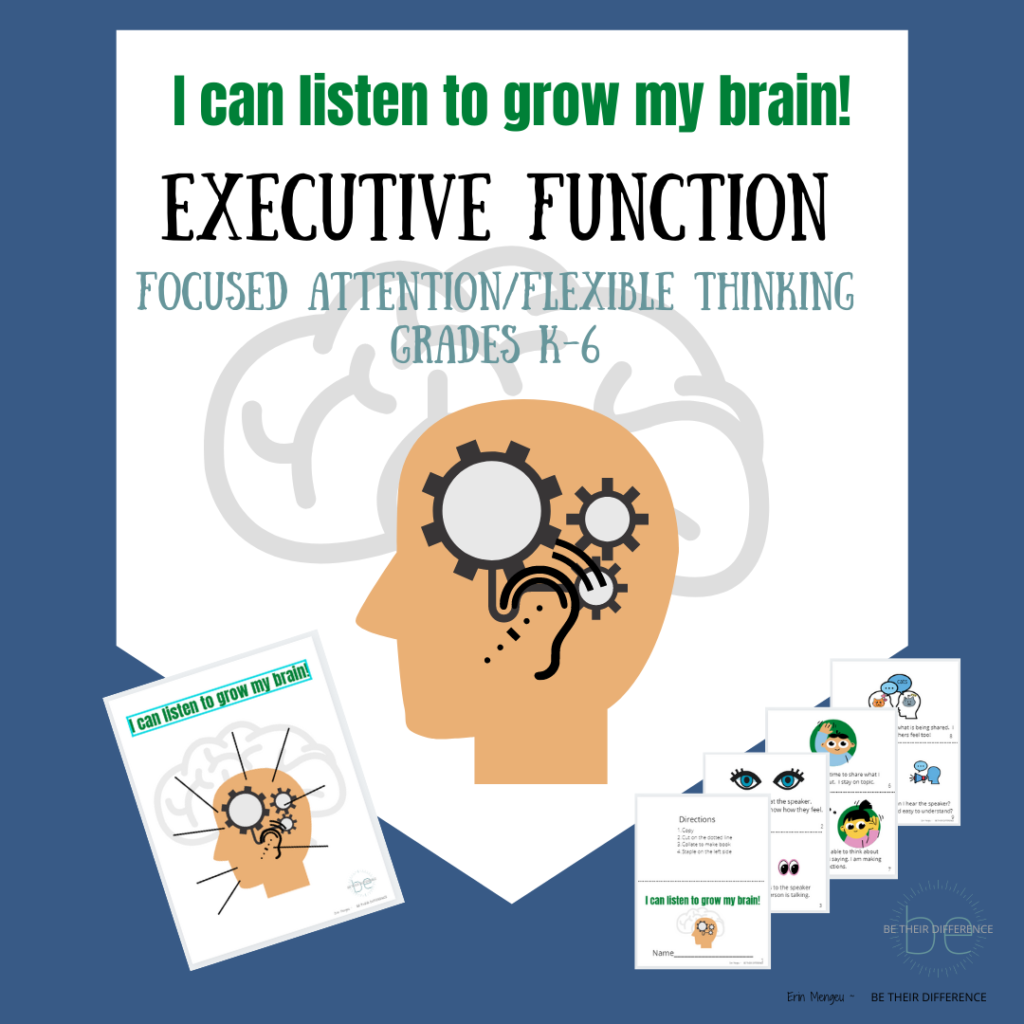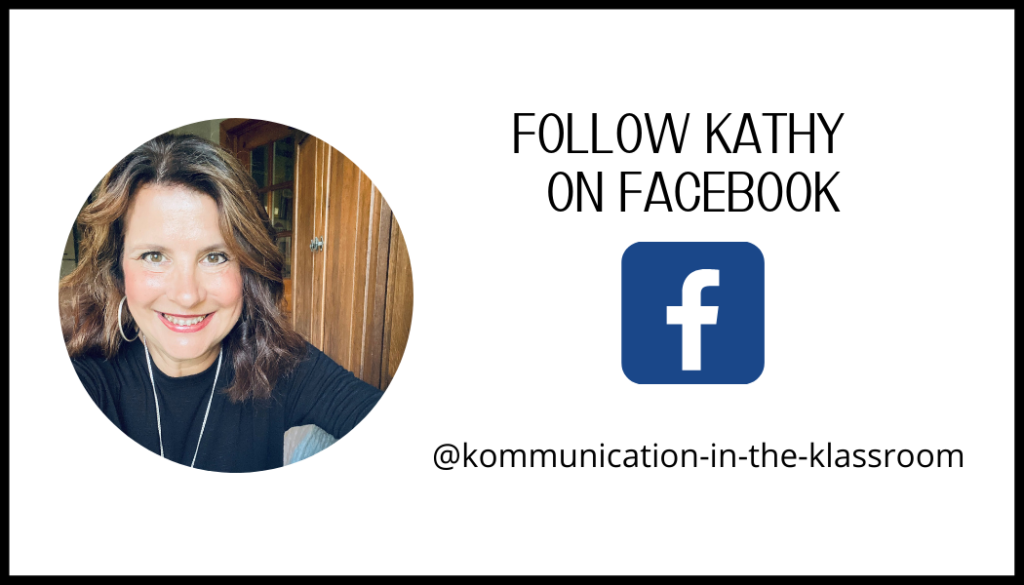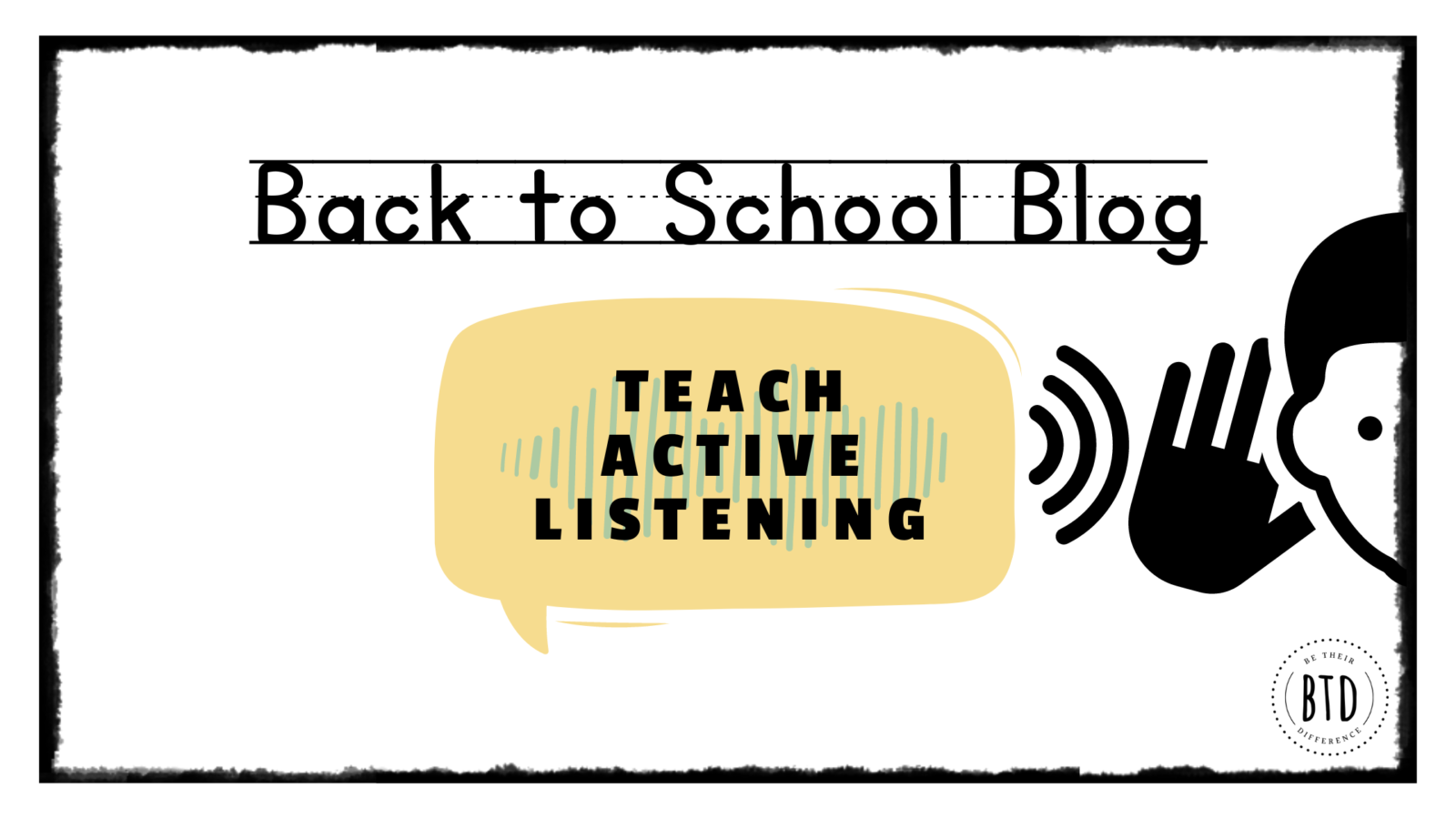How many times a day do you think you redirect your students because it seems they are not listening?
“Eyes on me, so that I know you are listening”, was a common phrase that I used in my own classroom.
And then I started teaching inclusion with Mrs. Kathy Tobias, SLP. She came into my classroom and taught lessons that aligned with developing executive function skills, speech, and language goals.
Listening was where she began.
And in the end, every student benefitted from her lessons. She may have technically been in my room for certain students, but they all became better listeners.
Mrs. Erin Mengeu
Meet Mrs. Kathy Tabias, SLP

Happy August! Let me introduce myself: I am Mrs. Kathy Tobias, a speech- language pathologist with 40+ years of experience, and a friend and colleague of Mrs. Erin Mengeu of Be Their Difference. On occasion, I will be a guest blogger at Be Their Difference to share strategies and tips for Kommunication in Your Klassroom (by Kathy!)
As you begin a new school year, familiarizing yourself and your students with new routines, you may want to consider teaching your students to be active listeners, early on.
Requiring intentional listening will help your students to develop many skills, not limited to: listening comprehension, reading comprehension, and listening for social interactions.
4 Practical Strategies for kicking-off Klassroom Kommunication with active listening:
1.Teach your students to understand the terms “listener” and “speaker.” We have done a cheer (with pom poms!) to practice this skill where Teacher shouts “When I am the Speaker, you are the…….? (Listener) When I am the Listener, you are the ……? (Speaker.)
2. Introduce and practice “whole body listening.” There are many great lessons and visuals, available for use, on teacher resource sites and in stores that specialize in educational materials.

Click here or on this resource to grab your own packet of listening lessons, plus a decodable reader to help your students understand how their whole body is part of active listening.
3. I recommend the 100% Listening Program-Primary by Lingua-Systems if you would like to practice on a regular basis. Your school SLPs may have this program in his/her inventory.
Even if you do not teach inclusion or work directly with your SLP, you are missing out if you are not talking with them and using them as a resource for your classroom! They have so many great ideas that will help every child become a better listener…and learner.
4. If you have students with IEP’s in your classroom, or if you want to or already collaborate with your school SLP, ask him/her to plan, or join you, for some mini lessons focusing on listening. There are so many benefits for us, and especially our students, when educators form interdisciplinary professional relationships and work together in the classroom. When Erin and I taught together, we had magical teaching moments that have inspired us to continue to collaborate and share ideas, years afterward!
Reinforce the roles “listener” and “speaker” and practice active listening across school contexts.
Are you already thinking of specific classroom and school-wide activities where your spoken directions can include active listening vocabulary, practice and role-play?
Some ideas might include:
- Taking turns during Morning Meeting and/or Calendar Time
- Partner Activities
- Preparing Students to participate in school assemblies
Applying active listening skills is a first step in learning “expected behavior” for varying school and social situations.
As we kick-off a new school year, and think about how to lay a foundation for communication and learning in your classrooms, I hope you will consider the following things:
- Explicitly teach active listening skills
- Explore the idea of collaborating with a related service provider, such as your school speech-language pathologist, for the benefit of your students and your own professional growth.
Wishing you a WONDERFUL start to your school year with lots of opportunities for Kommunication in your Klassroom!
~Kathy Tobias, SLP



I love the cheer for teaching the terms “speaker” and “listener.” Cheers and songs are such a fun and engaging what for students to learn new ideas. And the resource for teaching active listening skills looks very engaging too. I’m excited to try these out with my students!
As a school counselor, I like the idea of teaching active or intentional listening, whole body listening, and using those words throughout the school day to reinforce the concepts.
Thank you! It’s so important to explicitly teach students how to listen with their whole body. There is a difference between listening and “active” listening.
Amazing blog on promoting active listening skills in the classroom. The “whole body listening” concept seems engaging and interesting. I’m very excited to try these strategies for a more communicative classroom. Thanks for the tips!
I love the concept of leading by listening. It is quite the opposite of what normally comes to mind when thinking about teaching a lesson. Intentionally and explicitly teaching active listening is a good skill to begin the school year with. It seems like it would promote not only communication, but also respect for peers and teachers. Kathy, thank you for the active listening resources and for sharing your experience and knowledge.